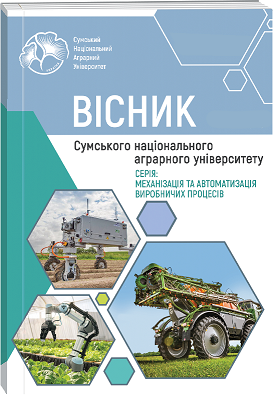RESEARCH OF FREE OSCILLATIONS OF THE BODY OF THE VEHICLE WHILE DRIVING
Abstract
Strength and fatigue properties are the most valuable mechanical characteristics of rubber as a construction material. For practice, the most interesting question is the product’s performance and the range of changes in its physical and mechanical parameters under the given conditions of environmental influence and operating mode. Interest in the problems of strength and fatigue of rubber has recently increased significantly due to the widespread introduction into practice of various products that carry large power loads. Therefore, numerous theoretical and experimental studies are devoted to the study of the effects of aging, fatigue and destruction of rubber. In recently published monographs, a summary of many years of theoretical and experimental research on the problems of the strength of polymer bodies is summed up, and considerable attention is paid to rubber in these works. Irreversible mechanical and chemical changes may accumulate in rubber during long-term exposure to static or signchanging loads. Such accumulation is usually called the fatigue process or fatigue, and the destruction of the sample as a result of its action – fatigue failure. During the long-term study of this process, specific terms were developed to characterize its individual elements. Thus, the working time of a part from the start of operation to failure is called durability, endurance or service life. However, it is extremely difficult to detect a crack in massive rubber products, and after the first visible crack, the service life of the part reaches 30% or more of the total service life. Taking into account the above, let’s determine the influence of the shape of the pressure pulse, which “runs” at a constant speed, on the stressed-deformed state of the hollow cylinder within the limits of elasticity, since the above-described elements of the car transmission must work elastically. To calculate the fatigue failure of the rubber elements of the transmission, we will accept the following assumptions: 1) the material contains a large number of various defects and structural imperfections with varying degrees of danger; 2) with an increase in the volume of the part, the probability of the presence of a dangerous defect increases; 3) the strength of the part is determined by the most dangerous defect. In the original stressed material of the rubber element, there are also various defects arising as a result of mechanical and thermal effects or manufacturing technology, structural imperfections (impurities in the load and ingredients of the rubber mixture), poor dispersion of the filler or vulcanization, places of concentration of residual stresses, etc. Such material imperfections are centers of microcracks that give rise to the destruction of the loaded part. The probability of the development of a crack from the most dangerous defect can be satisfactorily described within the classical theory of mathematical statistics.
References
2. L. Bockstal, T. Berchem, Q. Schmetz, A. Richel, Devulcanisation and reclaiming of tires and rubber by physical and chemical processes: A review, J. Clean. Prod. 236 (2019), 117574, https://doi.org/10.1016/j.jclepro.2019.07.049.
3. H.R. Karimi, M.R.M. Aliha, E. Khedri, A. Mousavi, S.M. Salehi, P.J. Haghighatpour, P. Ebneabbasi, Strength and cracking resistance of concrete containing different percentages and sizes of recycled tire rubber granules, J. Build. Eng. 67 (2023), 106033, https://doi.org/10.1016/j.jobe.2023.106033.
4. N.S. Mashaan, M.R. Karim, N.S. Mashaan, M.R. Karim, Waste tyre rubber in asphalt pavement modification Waste tyre rubber in asphalt pavement modification, 8917 (2014) 5–9. https://doi.org/10.1179/1432891714Z.000000000922.
5. T. Wang, F. Xiao, S. Amirkhanian, W. Huang, M. Zheng, A review on low temperature performances of rubberized asphalt materials, Constr. Build. Mater. 145 (2017) 483–505, https://doi.org/10.1016/j.conbuildmat.2017.04.031.
6. S. Amid, A. Foroutan, S. Dessouky, H. Mork, A. Kavussi, The use of high content of fine crumb rubber in asphalt mixes using dry process, Constr. Build. Mater. 222 (2019) 643–653, https://doi.org/10.1016/j.conbuildmat.2019.06.180.
7. K. Liu, K. Zhang, X. Shi, Performance evaluation and modification mechanism analysis of asphalt binders modified by graphene oxide, Constr. Build. Mater. 163 (2018) 880–889, https://doi.org/10.1016/j.conbuildmat.2017.12.171.

 ISSN
ISSN  ISSN
ISSN 



